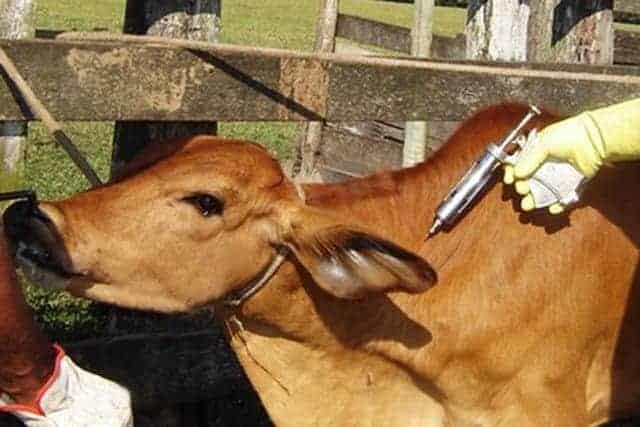Cattle and Sheep Vaccine Market Sees Growth Through Mergers Acquisitions and Regional Developments

The global cattle and sheep vaccine market is a vital segment of the veterinary healthcare industry, driven by the growing demand for animal-derived products, increasing livestock population, and rising awareness about animal health. Vaccination plays a critical role in maintaining herd health, preventing disease outbreaks, and ensuring food safety. In recent years, the competition within this market has intensified as pharmaceutical giants and emerging biotech firms vie for market share. This article explores the competitive landscape of the cattle and sheep vaccine market, analyzing key players, market trends, and strategic initiatives.
Market Overview
Cattle and sheep vaccines protect against a wide range of diseases, including foot-and-mouth disease, clostridial infections, bluetongue, bovine respiratory disease (BRD), and sheep scab. These vaccines are typically categorized into live attenuated, inactivated (killed), subunit, and recombinant vaccines. The demand for these products is particularly high in regions with large livestock industries such as North America, Europe, Latin America, and Asia-Pacific.
Key Players and Competitive Landscape
The market is dominated by several major players, including:
-
Zoetis Inc. – A global leader in animal health, Zoetis offers a comprehensive portfolio of vaccines for cattle and sheep. Its strong R&D capabilities and global distribution network give it a significant competitive edge.
-
Merck Animal Health (MSD Animal Health) – Known for its innovative vaccines and commitment to disease prevention, Merck has a robust portfolio, including products for bovine respiratory and reproductive diseases.
-
Boehringer Ingelheim Animal Health – This German pharmaceutical giant has made strategic acquisitions to bolster its vaccine portfolio, particularly through its 2017 acquisition of Merial.
-
Elanco Animal Health – Following its acquisition of Bayer Animal Health, Elanco has expanded its product offerings and global footprint, becoming a prominent player in livestock vaccines.
-
Ceva Santé Animale – A French company that has carved out a niche with its focus on ruminant vaccines and partnerships in developing markets.
Apart from these global giants, regional players in Asia-Pacific and Latin America are gaining traction due to localized production, cost-effective products, and tailored disease management strategies.
Competitive Strategies
1. Product Innovation:
Innovation remains a key competitive driver. Companies are investing heavily in R&D to develop next-generation vaccines that are safer, more effective, and easier to administer. For example, intranasal vaccines and needle-free delivery systems are gaining popularity for reducing stress in animals and minimizing disease transmission.
2. Mergers and Acquisitions:
M&A activity has reshaped the competitive landscape. By acquiring smaller biotech firms or merging with competitors, companies gain access to new technologies, intellectual property, and expanded distribution networks.
3. Regional Expansion:
Emerging markets, particularly in Asia and Africa, offer growth opportunities due to rising livestock populations and government initiatives to improve animal health. Companies are establishing manufacturing facilities and partnerships in these regions to enhance market penetration.
4. Strategic Partnerships:
Collaborations with government agencies, academic institutions, and research organizations are common strategies to accelerate vaccine development and improve regulatory compliance.
5. Digital and Data Integration:
Advanced data analytics and precision livestock farming tools are increasingly being integrated into vaccine management. Some companies now offer digital platforms that track vaccine schedules, monitor herd health, and provide real-time alerts, enhancing customer engagement and compliance.
Market Challenges
Despite strong growth potential, the market faces several challenges:
-
Regulatory Hurdles: Vaccine approval processes are complex, varying widely across regions. Regulatory compliance can delay product launches and increase costs.
-
Cold Chain Requirements: Vaccines require strict cold chain logistics, which can be particularly challenging in remote or underdeveloped areas.
-
Antimicrobial Resistance (AMR): As global concerns about AMR grow, vaccines are seen as a preventive measure to reduce antibiotic use. However, educating farmers and promoting adoption remains a hurdle.
-
Disease Variability: Constant mutation of pathogens demands continuous surveillance and adaptation of vaccines, which adds to R&D costs.
Future Outlook
The cattle and sheep vaccine market is expected to continue growing steadily, driven by increasing livestock disease outbreaks, consumer demand for safe animal products, and supportive government policies. Innovation will remain a cornerstone of competitive advantage, particularly in developing recombinant and multivalent vaccines.
- Art
- Causes
- Crafts
- Dance
- Drinks
- Film
- Fitness
- Food
- Games
- Gardening
- Health
- Home
- Literature
- Music
- Networking
- Other
- Party
- Religion
- Shopping
- Sports
- Theater
- Wellness


